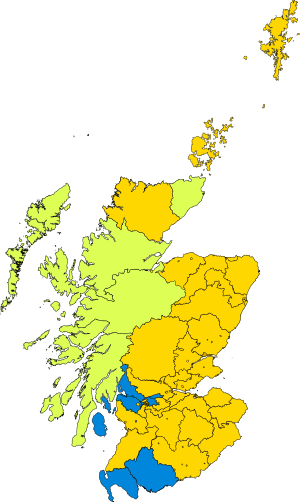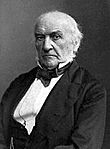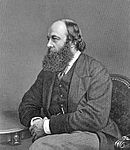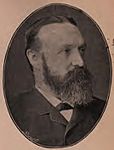1885 United Kingdom general election in Scotland facts for kids
|
|||||||||||||||||||||||||||||||||||||||||||||
|
|
|||||||||||||||||||||||||||||||||||||||||||||
|
All 72 Scottish seats to the House of Commons |
|||||||||||||||||||||||||||||||||||||||||||||
|---|---|---|---|---|---|---|---|---|---|---|---|---|---|---|---|---|---|---|---|---|---|---|---|---|---|---|---|---|---|---|---|---|---|---|---|---|---|---|---|---|---|---|---|---|---|
|
|||||||||||||||||||||||||||||||||||||||||||||

Results of the 1885 election in Scotland
|
|||||||||||||||||||||||||||||||||||||||||||||
The 1885 United Kingdom general election was a big event for Scotland. It happened between November 24 and December 18, 1885. People in Scotland voted for their representatives in the House of Commons. This election was important because many things had changed since the last one in 1880.
Contents
What Was the 1885 Scottish Election About?
This election decided who would represent Scotland in the UK Parliament. Scotland had 70 local areas, called constituencies, where people voted. There were also two special constituencies for universities.
Changes to Voting and Seats
A new law, the Redistribution of Seats Act 1885, changed how many seats Scotland had. Scotland gained 12 more seats, bringing its total to 72. This meant more representatives for Scotland in Parliament.
Another important law, the Representation of the People Act 1884, allowed many more people to vote. Before this, only people who owned a certain amount of property could vote. This new law lowered the requirements. Because of this, the number of voters in Scotland almost doubled, from about 293,000 to over 560,000. This was a huge change for democracy!
New Voices: The Crofters Party
The election also saw some interesting changes in how people voted. The Liberal Party was very strong in Scotland, but in 1885, some Liberals decided to run as "Independent Liberals." This meant they were still Liberal, but they didn't follow the main party's rules exactly. For example, in Edinburgh, three out of four areas elected Independent Liberals.
A new group called the Crofters Party became very important, especially in the western Highlands. Crofters were small farmers who often struggled with land ownership. The new voting law helped them a lot, as many crofters could now vote for the first time.
The Crofters Party worked closely with the Highland Land League. They wanted to make sure crofters had secure rights to their land. They also wanted more land to be available for farming. This party won four seats, showing how much people cared about land rights. Even an Independent Liberal from Wick Burghs supported their cause.
Who Won? The Election Results
The Liberal Party remained the largest party in Scotland. However, they lost a few seats compared to the last election. The Conservative Party gained some seats. The new Crofters Party also won a good number of seats, showing their growing influence.
Here's a quick look at how the main parties did:
- The Liberal Party won 51 seats.
- The Conservative Party won 8 seats.
- The Crofters Party (including Independent Liberals who supported them) won 4 seats.
- Other Independent Liberals won 7 seats.
Two special university constituencies also held elections. The Edinburgh & St Andrews Universities seat was won by a Conservative candidate. The Glasgow and Aberdeen Universities seat was also won by a Conservative candidate, who ran unopposed.
How People Voted
The charts below show how many votes each party received and how many seats they won.
| Popular vote | ||||
|---|---|---|---|---|
| Liberal | 53.3% | |||
| Conservative | 34.3% | |||
| Independents & Other | 8.6% | |||
| Crofters Party | 3.7% | |||
| Scottish Land Restoration League | 0.5% | |||
| Parliament seats | ||||
|---|---|---|---|---|
| Liberal | 71.83% | |||
| Conservative | 14.01% | |||
| Independents Liberals | 9.86% | |||
| Crofters Party | 5.63% | |||
See also




